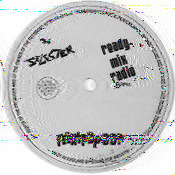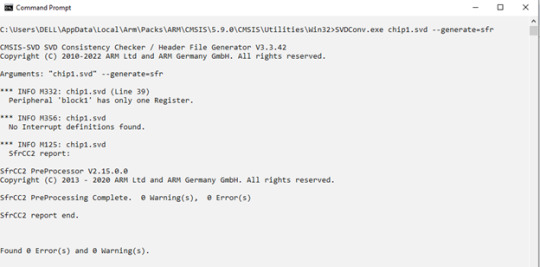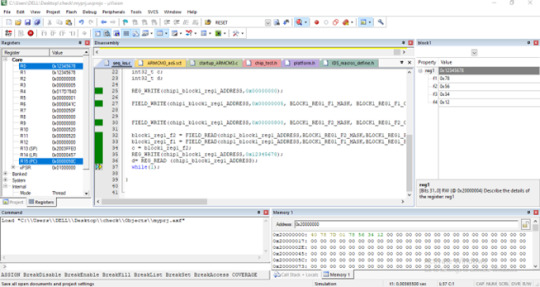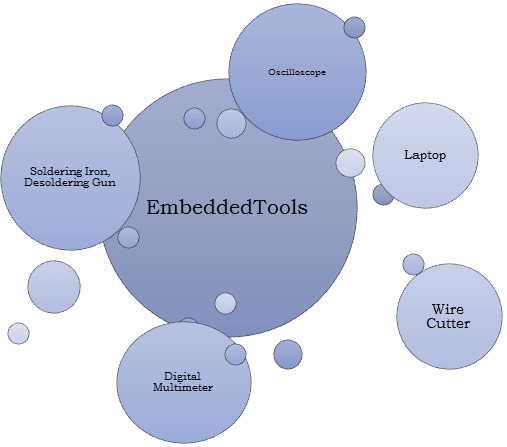#keil programming
Explore tagged Tumblr posts
Text
The advent of technology has leaped mankind to a new level in almost every field of life, ranging from education to business, tourism to medicine. IT departments and computer professionals have grown to become one of the important assets of any organization since they have the power to drive the organization towards the attainment of an effective and structured infrastructure. IT professionals are known to be involved in different activities like development, analysis, design, implementation and maintenance pertaining to computer applications and hardware, as well as data mining and data warehousing techniques. The computer applications that are developed by IT professionals have an impact on their environment and society; some effects may not be as positive as the others. Therefore, it is important for the IT professionals to understand the magnitude of the probable effects of their creations so that they can aim to produce applications that benefit the society, rather than cause harm. Thomson and Schmoldt (2001) defined professional ethics as the concepts of doing good or bad, right or wrong; it involves the decision making aspects of any professional conduct. Computer ethics have gained much importance over the last two decades since many articles, journals and conferences discuss its relevance in the prevailing times. It has been attempted to be explained by many researchers, however, Bynum and Rogerson (1996) defined it comprehensively as the field of analysis that identifies the effects of information technology on the health, wealth, intellect, freedom, privacy, security and work of individuals in the society. Therefore it can be stated that computer ethics involve the effects on humans as well as on the society. Crnkovic (n.d) pointed out that an IT professional possesses the power to ‘create’; this power has to be exercised with greater responsibility since it influences people and their lives. The IT professionals should have strong ethical mindsets to overcome the unjust temptations and continue to use their tools and platforms for the betterment of mankind. 2. Literature Review An IT professional maintains relationships with several figures including, employer, clients and society. Some conflicts of interest might rise among these entities; it is the responsibility of the IT professional to tackle the conflicts with ethical considerations. Keil (2008) categorized the ethical concerns of IT professionals as following: data protection, privacy and security, intellectual property and honesty. Moor (1998) stressed on the relevance of computer ethics by defining it as a ‘special field of ethical research’. He classified the area of computer ethics into two broad divisions; firstly, the social effects of the computer technology on humans and society, and secondly, the policies and standards that are formulated for the implication of computer ethics in different fields. He argued that there exists a ‘policy vacuum’ in the area of computer ethics. Moor (1985) also agreed with the minimal focus on formulation of policies of computer ethics on an international level. Few efforts that have been made in this respect have resulted in the development of ‘ACM Code of Ethics and Professional Conduct’ (Association for Computing Machinery, 2011). The guideline compels the IT professionals to develop software that protect the users from health and safety threats. It discourages all actions that are aimed to intentionally destroy data or files that might be present in any individual’s system i.e. development of viruses. Computer ethics are also important so that due credit for the development of any software is given to the deserving side. ACM Code of Ethics and Professional Conduct also promotes this notion and strictly prohibits any unauthorized replications or usage of programs or tools (Association for Computing Machinery, 2011). Weckert (1997) defined intellectual property rights as the rights over intangible things like ideas, concepts, knowledge etc; intellectual property rights also inquire about the sense in which the property is owned and to what extent. The main question of intellectual property arises when a company develops a system for their clients; the idea of the system is given by the respective company and the man hours have been spent by the computer professionals. Read the full article
0 notes
Text


Stayed up for Pop-Shop Radio tonight 0100z 5950 kHz AM and what a great radio program. They end with some MFSK 64, a play list and a few images.
G106 Xeigu radio G5RV antenna @ AMS N2QFD in the Southern Tier of NY
Now to ground the antenna ahead of the inbound storms and hit the hay.
Pop Shop Radio-Radiogram Show 2025-13 MFSK64-Colour 175 x 175 px
Image: The_Selecter-Ready_Mix_Radio Sending Pic:175x175C;
The Selecter-Ready Mix Radio Flexipop 001 (USA) 1980
Flexipop was a unique music magazine from the UK that started up in
Every issue featured flexi-disk with an exclusive track by one of the top artists of the day. The flexi that came with the first issue was a special remix of On My Radio by 2-Tone group The Selecter. Flexipop was published until 1983
The Selecter, from Coventry, was one of the most successful groups on the 2-Tone record label. They shared the first release on 2-Tone with The Specials and scored a number 8 hit in the UK charts with On My Radio in 1980.
Playlist: Christie-Yellow River Gene Pitney-It Hurts To Be In Love Lou Monte-Pepino The Italian Mouse The Vi-Tones-Stop What You're Doing 5th Dimension-You Are The Reason I Feel Like Dancing Middle Of The Road-Soley Soley Olivia Newton John-If Not For You Paul Revere And The Raiders-Hungry Ringo Starr-La De Da Roxy Music-In The Midnight Hour Tommy James & The Shondells-Mirage The New Wave Band-Cecilia Chad & Jill Stuart-The Cruel War Eliza Keil-Raindrops Keep Falling On My Head Harry Belafonte-Star O Harry Belafonte-Day O Glen Campbell-Any Which Way You Can Grin-If I Were A Song The Selector-Ready Mix Radio
For more great stuff tune your radio to: Radio Northern Europe International The Mighty KBC Radio Carpathia Radio Catface International Cult of Show Texas Radio Shortwave Shortwave Radiogram
For Pop Shop Radio T-shirts and more visit https://www.cafepress.ca/shop/PopShopRadioSwag
reception reports to: [email protected] Bluesky: @popshopradio.bsky.social
Image: Flexipop Sending Pic:125x175C;
1 note
·
View note
Text

How Embedded Software Engineer Training in India Preps You for Global Opportunities
The field of embedded systems has revolutionized the way we interact with technology, from consumer electronics to industrial automation. As the demand for skilled professionals continues to grow, embedded software engineer training in India has become a cornerstone for aspiring engineers seeking to carve out a successful career on the global stage. With a focus on cutting-edge technologies, real-world applications, and international standards, this training equips students with the tools they need to excel.
Why Choose Embedded Software Engineering?
Embedded systems power today's modern technologies, from smartphones to medical devices. As such, an embedded software engineer is crucial for designing, coding, and optimization of these systems to ensure flawless operation. With this niche, there are limitless possibilities to innovate and grow in a career; hence, the field is ideal for tech lovers.
The reason India has emerged as a hub for embedded software engineering is due to its robust IT ecosystem, abundant talent pool, and growing investments in technology. From multinational corporations to startups, the industry's demand for skilled engineers is unprecedented. Embedded software engineer training in India bridges the gap between theoretical knowledge and practical skills, ensuring students are job-ready and globally competitive.
Core Components of Embedded Software Engineer Training
1. Comprehensive Curriculum
The training programs in India are designed to cover all aspects of embedded systems, including hardware design, software development, and system integration. Students gain proficiency in programming languages like C and C++, real-time operating systems (RTOS), and microcontroller-based system design.
2. Hands-On Projects
The mastery of embedded systems requires practical experience. The training programs emphasize project-based learning, where the students design and implement embedded solutions for real-world problems. Projects are designed to simulate industry scenarios, thereby improving problem-solving skills and creativity.
3. Industry-Relevant Tools
Students are also exposed to current tools and technologies like MATLAB, Keil, and Arduino. Thus, students can easily apply themselves to global jobs by mastering the current trends used in industries.
4. Soft Skills
Other than technical skills, soft skills are emphasized. Soft skills include communication, teamwork, and project management skills that engineers work under in multinational companies worldwide.
One of the most attractive facets of embedded software engineer training in India is its alignment with international career opportunities.
After graduating, candidates can work as embedded software developers, system architects, or firmware engineers. Companies, which are mainly automobile, aerospace, healthcare, and consumer electronics manufacturers, require engineers from India, providing challenging and rewarding job opportunities both at home and overseas.
TechnosCOE: Leaders in Embedded System Training
Among the institutions offering specialized training, TechnosCOE stands out as a leader in preparing students for global challenges. TechnosCOE integrates theoretical knowledge with hands-on experience, ensuring a holistic learning journey.
The flagship program of the institution focuses on:
Practical application through industry-oriented projects.
Partnerships with leading tech companies to provide internships and placement opportunities.
Access to cutting-edge labs equipped with the latest embedded tools.
Students graduating from TechnosCOE are well-prepared and confident to take on international roles, making them highly sought after by employers around the world.
Benefits of Embedded Software Engineer Training in India
1. Affordable Education
India provides quality education at a fraction of the cost compared to Western countries. This affordability, combined with top-notch facilities and expert faculty, makes it a preferred destination for embedded software training.
2. Cultural and Technological Diversity
Training in India exposes students to a myriad of ideas and approaches, thereby enhancing innovation. The multicultural environment prepares them to effectively work in global teams.
3. Job Opportunities Galore
Because the Indian tech industry is expanding rapidly, students will not run out of practical experience and local employability before venturing into international options.
4. Networking Opportunities
A wide scope of exposure to industry leaders, hackathons, and conferences is facilitated by India's booming tech hub for students, thus expanding professional networks.
Embedded Systems in the Future of India
The future of embedded systems is bright as it is connected with the advent of IoT, AI, and automation. For India, talent pool and training programs are now the benchmark set for global standards.
It is embedded software engineer training in India that leads to this transformation and ensures the engineers are adequately equipped to respond to the demands of the changing industry. In other words, such training helps prepare students to innovate and meet the needs of international requirements for making an impact worldwide.
Conclusion
With the right training, this is the initial step toward an embedded software engineer. The courses about embedded software engineering in India focus on the right blend of theoretical knowledge and global exposure, ensuring that aspiring students get the very best of practical skills and understanding. Institutes such as TechnosCOE push students toward excellence and prepare them for global success.
0 notes
Text
Embedded Software Development Tools for Advanced Systems Design
Embedded systems have become an integral part of modern technology, powering everything from smart appliances and automobiles to medical devices and industrial equipment. To create these advanced systems, developers rely on a suite of embedded software development tools designed to streamline the process, enhance efficiency, and ensure reliability. This article explores the key tools used in embedded software development and how they contribute to advanced systems design.
What Are Embedded Software Development Tools?
Embedded software development tools are specialized resources that help developers design, write, test, and debug software for embedded systems. Unlike standard software development, embedded development must consider hardware constraints, real-time requirements, and system reliability. These tools enable developers to create optimized code that interacts seamlessly with the underlying hardware.
Key Characteristics of Embedded Software Development Tools
Hardware-Specific: Tailored for specific microcontrollers, processors, or hardware platforms.
Real-Time Capabilities: Support for real-time processing to meet stringent timing requirements.
Optimization: Focus on memory and performance efficiency due to limited resources in embedded systems.
Types of Embedded Software Development Tools
1. Integrated Development Environments (IDEs)
Description: IDEs provide a comprehensive environment for code development, debugging, and project management. They integrate various tools like editors, compilers, and debuggers into a single interface.
Popular IDEs:
Keil MDK
MPLAB X IDE
STM32CubeIDE
Benefits:
Simplifies the development process by consolidating tools.
Provides real-time error detection and debugging.
Supports project organization and version control.
2. Compilers and Assemblers
Description: These tools convert high-level programming languages (like C or C++) into machine code that microcontrollers can execute. Assemblers handle assembly language conversion.
Popular Compilers:
GCC (GNU Compiler Collection)
IAR Embedded Workbench
Arm Compiler for Embedded
Benefits:
Translates code into efficient, executable formats.
Offers optimization features for performance and memory use.
3. Debuggers
Description: Debuggers allow developers to identify and fix issues in their code by monitoring and controlling program execution in real-time.
Types of Debugging Tools:
On-chip Debuggers: Interface directly with the microcontroller.
Software Debuggers: Simulate code execution on a virtual platform.
Popular Debugging Tools:
JTAG and SWD interfaces
OpenOCD
Benefits:
Enables step-by-step execution and error tracing.
Provides insights into variable states, memory usage, and processor status.
4. Emulators and Simulators
Description: Emulators replicate the functionality of the target hardware, while simulators model the behavior of the software without requiring physical hardware.
Popular Tools:
QEMU (Quick Emulator)
Proteus Design Suite
Benefits:
Allows early-stage testing without hardware.
Reduces dependency on physical prototypes.
5. Real-Time Operating System (RTOS) Tools
Description: RTOS tools facilitate real-time task scheduling and resource management for embedded systems requiring precise timing.
Popular RTOS Tools:
FreeRTOS
VxWorks
Zephyr
Benefits:
Enables multitasking and time-critical operations.
Enhances system stability and responsiveness.
6. Logic Analyzers and Oscilloscopes
Description: These hardware tools analyze and visualize signal data from embedded systems, helping developers debug hardware-software interactions.
Benefits:
Provides detailed insights into signal timing and integrity.
Aids in resolving hardware-related issues.
How Embedded Software Development Tools Aid Advanced Systems Design
Ensuring System Reliability
Reliability is paramount in advanced systems, especially in industries like healthcare and automotive. Debuggers, emulators, and logic analyzers help identify and rectify errors early in development, reducing the risk of system failures.
Enhancing Performance Optimization
Performance optimization tools, such as compilers with advanced optimization settings, ensure efficient memory usage and faster execution. These optimizations are critical for resource-constrained embedded systems.
Simplifying Hardware-Software Integration
Tools like simulators and IDEs bridge the gap between hardware and software, enabling seamless integration. This is particularly useful for complex systems requiring tight coordination between components.
Accelerating Development Cycles
The integration of multiple functionalities within IDEs, along with tools like RTOS, streamlines the development process. This reduces time-to-market, which is crucial in competitive industries.
Choosing the Right Tools for Your Project
Selecting the appropriate embedded software development tools depends on several factors:
Target Hardware: Ensure the tools are compatible with your microcontroller or processor.
Project Complexity: Choose tools that support advanced features like multitasking, real-time debugging, and performance profiling.
Team Expertise: Select tools that align with your team's skill set and experience.
Budget Constraints: Some tools are open-source and free, while others require licensing fees.
Trends in Embedded Software Development Tools
Increasing Use of AI and Machine Learning
AI-driven tools are being used to enhance code analysis, bug detection, and optimization, reducing manual effort and errors.
Cloud-Based Development Platforms
Cloud-based IDEs and collaboration tools allow teams to work remotely and access powerful computing resources for simulations and testing.
Focus on Security
With the rise of IoT and connected devices, security-focused tools are becoming essential for detecting vulnerabilities and ensuring secure firmware development.
Support for Heterogeneous Systems
Modern tools are increasingly designed to handle heterogeneous systems, where multiple processors and cores work together to achieve specific tasks.
Conclusion
Embedded software development tools are critical for designing advanced systems that are reliable, efficient, and high-performing. From IDEs and compilers to debuggers and logic analyzers, each tool plays a specific role in simplifying the development process and ensuring system integrity. As technology evolves, developers must stay updated with the latest tools and trends to create innovative and secure embedded systems for a wide range of applications.
0 notes
Text
What are essential tools for embedded system development?
Embedded system development relies on a variety of tools to design, develop, test, and debug hardware and software components. These tools play a critical role in ensuring efficient workflows and reliable outcomes in creating embedded solutions.
1. Integrated Development Environment (IDE): Tools like Keil uVision, Eclipse, and MPLAB X IDE provide a comprehensive platform for coding, compiling, and debugging embedded programs. They streamline development by integrating essential features into one environment.
2. Compilers and Assemblers: Compilers such as GCC or proprietary ones like IAR Embedded Workbench translate high-level code into machine code that microcontrollers can execute. Assemblers handle low-level assembly language translation.
3. Debuggers: Debugging tools like JTAG, ST-Link, and ICE (In-Circuit Emulators) help developers identify and resolve issues in real-time by interacting with the hardware directly.
4. Simulators: Simulators mimic the behavior of hardware, allowing developers to test software without requiring the actual hardware. Tools like Proteus and QEMU are commonly used.
5. Logic Analyzers and Oscilloscopes: These tools are vital for analyzing digital and analog signals. They help developers verify communication protocols, timing, and electrical signals.
6. Version Control Systems: Tools like Git are crucial for managing code versions, collaboration, and tracking changes during development.
7. Real-Time Operating Systems (RTOS): Software like FreeRTOS or Zephyr provides frameworks to manage task scheduling, memory, and resource allocation in real-time applications.
8. Protocol Analyzers: Tools like Wireshark are used to debug and analyze communication protocols like SPI, I2C, UART, and BLE.
By mastering these tools, developers can efficiently design and optimize embedded systems. To gain hands-on experience and expertise, enrolling in an embedded system certification course is a valuable step toward building a career in this domain.
0 notes
Text
Getting Started with Embedded Programming: Tools and Techniques
Embedded programming is an exciting field that combines hardware and software to create systems that control various devices and processes. From simple microcontrollers in household appliances to complex systems in automobiles and medical devices, embedded programming plays a vital role in modern technology. If you’re looking to dive into embedded programming, this guide will outline essential tools and techniques to help you get started.

Understanding Embedded Programming
At its core, embedded programming involves writing software that runs on embedded systems—computers designed to perform dedicated functions within larger systems. Unlike traditional programming, which often runs on general-purpose computers, embedded programming requires a deep understanding of hardware constraints, real-time performance requirements, and low-level programming.
Essential Tools for Embedded Programming
Microcontrollers and Development Boards
Arduino: A popular platform for beginners, Arduino boards come with an integrated development environment (IDE) and a user-friendly programming language based on C/C++. The vast community support and numerous libraries make it easy to get started.
Raspberry Pi: Although primarily a single-board computer, Raspberry Pi can be used for embedded programming projects, especially those requiring more computational power. It supports various programming languages and operating systems.
ESP8266/ESP32: These Wi-Fi-enabled microcontrollers are ideal for IoT projects. They are programmable using the Arduino IDE or the Espressif IDF and offer great features for wireless applications.
Development Environments and IDEs
Arduino IDE: Specifically designed for Arduino programming, this IDE simplifies the process of writing and uploading code to the board.
PlatformIO: An open-source ecosystem for IoT development, PlatformIO supports multiple boards and frameworks, providing advanced features like libraries and debugging tools.
Keil uVision: A popular IDE for ARM microcontrollers, offering a comprehensive development environment, including simulation and debugging capabilities.
Eclipse with Embedded Plugins: Eclipse can be customized with plugins for embedded development, supporting various toolchains and microcontrollers.
Compilers and Toolchains
GCC (GNU Compiler Collection): Widely used for compiling C and C++ code for embedded systems. It supports various microcontroller architectures and is essential for low-level programming.
ARM Toolchain: A collection of tools used to develop applications for ARM-based microcontrollers. It includes a compiler, assembler, and linker, providing everything needed for embedded development.
Debugging Tools
JTAG/SWD Debuggers: Hardware debuggers like J-Link or ST-Link provide a means to debug embedded systems at the hardware level, allowing for real-time code execution and monitoring.
Serial Monitors: Tools that enable communication between your computer and the microcontroller via serial ports. They are useful for debugging and monitoring output during development.
Techniques for Embedded Programming
Start with a Simple Project Begin with a basic project that interests you, such as blinking an LED or reading a sensor. This hands-on experience will help you understand the fundamentals of embedded programming and familiarize you with the tools.
Learn C/C++ Basics Most embedded systems are programmed in C or C++, so having a strong grasp of these languages is essential. Focus on key concepts such as data types, control structures, and pointers, as these are frequently used in embedded programming.
Understand Hardware Basics Familiarize yourself with the hardware you are working with, including pin configurations, voltage levels, and peripheral interfaces (like I2C, SPI, UART). Knowing how to interact with the hardware is crucial for successful embedded programming.
Utilize Libraries and Frameworks Take advantage of existing libraries and frameworks to simplify your development process. Libraries can provide pre-written code for common functions, such as controlling motors or reading sensors, allowing you to focus on the logic of your application.
Implement Real-Time Operating Systems (RTOS) For more complex projects, consider using an RTOS to manage multitasking and timing constraints. An RTOS helps in scheduling tasks, ensuring that your application meets real-time requirements.
Practice Debugging and Testing Develop good debugging habits by regularly testing your code and using debugging tools. Learn to analyze errors, use breakpoints, and monitor variables during execution. Rigorous testing will ensure that your embedded application functions as intended.
Expanding Your Knowledge
Online Courses and Tutorials: Platforms like Coursera, Udacity, and edX offer various courses in embedded systems and programming. These courses can provide structured learning and hands-on projects.
Books and Resources: Consider reading books like "Programming Embedded Systems in C and C++" by Michael Barr or "The Definitive Guide to ARM Cortex-M3 and Cortex-M4 Processors" by Joseph Yiu for deeper insights.
Join Communities and Forums: Engaging with online communities such as Arduino forums, Raspberry Pi forums, or Stack Overflow can provide support and inspiration. These platforms are valuable for asking questions and sharing your projects.
Conclusion
Getting started with embedded programming can be both challenging and rewarding. By leveraging the right tools and techniques, you can develop your skills and create innovative projects that bridge the gap between hardware and software. Whether you aim to build IoT devices, control robotics, or develop smart applications, the world of embedded programming offers endless possibilities. So, gather your tools, start coding, and unleash your creativity in this fascinating field!
0 notes
Text
Buy ST-Link V2 Programmer at Affordable Price in Ainow
ST-Link V2 Programmer For STM8 and STM32 is fully consistent with the official version, support for automatic upgrades, support the full range STM32 SWD (only 4pins including SWCLK, SWDIO, and power) and a full range STM8 SWIM (only 4pins including SWIM, Reset and power) download and debug. Use this device to send program code to the 32-bit STM32 ARM Cortex or 8-bit STM8 microcontrollers. The header for this ST-Link v2 programmer contains connections for 5V, 3.3V, SWCLK, SWDIO, SWIM, Reset (RST/NRST) and GND. The connector on the opposite side of this device is a USB connector and is intended to be plugged into the computer.
Note: The product is available in Multiple colors Will be shipped randomly.
Supports For ST-LINK V2 Programmer:
ST-LINK Utility 2.0 and above.
STVD 4.2.1 and above.
STVP 3.2.3 and above.
IAR EWARM V6.20 and above.
IAR EWSTM8 V1.30 and above.
KEIL RVMDK V4.21 and above.
Features :
PCB installed inside of aluminum alloy U disk shell, portable, safe and reliable!
Interface definition directly marked on the shell, clear, convenient and practical!
5V, 3.3V offers at the same time, allowing you to program your target board with both 5V and 3.3V
Shell characters using laser engraving, never fade off! Permanent clarity!
500MA internal resettable fuse, complete protection of your expensive computer motherboard!
Red and blue color LED indicator, allowing you to always observe ST-LINK V2 working condition!
With 4 DuPont line, so you can easily respond to different target board line order!
Use anti-static bag packaging.
SWIM specific features:
SWIM cable for connection to the application via a pin header or a 2.54 mm pitch connector
1.65 V to 5.5 V application voltage supported on SWIM interface
SWIM low-speed and high-speed modes supported
SWIM programming speed rate: 9.7 Kbytes/s in low speed and 12.8 Kbytes/s in high speed
SWIM cable for connection to the application
Direct firmware update feature supported (DFU)
Status LED which blinks during communication with the PC
Operating temperature 0 to 50°C

0 notes
Text
CMSIS support in IDesignSpec
IDesignSpecTM (IDS) is a product suite that improves the productivity of FPGA/ASIC, IP/SoC, and System Development teams. These products encompass an innovative register information management system to capture hardware functional specifications and addressable register specifications in a single "executable" specification. All downstream code and documentation for the addressable registers, sequences or interrupts can be generated from a single specification along with CMSIS support.
CMSIS is a standard developed by ARM for Cortex-M processors. CMSIS allows compatible device support and provides software interfaces to the microprocessor and its peripherals so that software can be reused. CMSIS also helps to reduce the time to market for newly manufactured devices.
The following problems can be solved by IDS when it generates CMSIS output:
Automatic generation of CMSIS-SVD files for Silicon vendors. They don’t need to write it.
Silicon vendors can give these files to Tool vendors.
SVD files are used for debugging purposes for programmers.
IDS supports ARM-provided CMSIS-SVD component of CMSIS as an output, CMSIS stands for Common Microcontroller Software Interface Standard. The CMSIS System View Description format(CMSIS-SVD) standardizes the description of the system which is developed with Arm Cortex-M processor-based microcontrollers, in particular, the memory-mapped registers of peripherals.

Silicon vendors require a CMSIS-SVD file with a .svd extension which will further aid in the real-time debugging of programmer’s software code. Based on this file, the silicon vendor will further develop the startup code and the system initialization files specific to their device. Before CMSIS support, programmers could see only data inside the peripheral registers connected with microprocessors inside microcontrollers. But with CMSIS-SVD support custom peripheral registers data can also be seen.
IDS generated XML format SVD file has Device hierarchy acceptable by Keil (ARM-supported tool)with zero errors i.e. device-cpu-peripherals-peripheral-registers-register-fields. We provide the device’s peripherals base address( which is selected by the location of the executable memory of the microcontroller) and offset of Registers and access type etc. ARM Command Utility (SVDConv.exe) converts the SVD file into a Special Function Register(SFR) file which is shown below in the snippet.

Custom peripheral registers can also be seen for debugging purposes from the SFR file which has to be added in the Keil with the respective path in the “option in target dialog” section which is shown below in the snippet.

Figure 3: SFR file in Keil µvision-An ARM Tool
Validation of data written or read inside Peripheral Registers, connected with ARM processor, is possible through FPGA boards like Zedboard with the help of Xilinx Vivado-SDK platform. Now It is possible in the ARM's tool Keil itself. Keil supports XML format.
In IDS-Validate a programmer can give inputs such as Register specs and sequence specifications. The tool will generate output as a Header file, SVD (XML) file, and sequence APIs or firmware. With the help of these outputs, programs can be executed in Keil, as shown below in the block diagram.
Figure 4: Block Diagram of IDS Role play with Keil µvision
In IDS-Validate, Programmers generate their firmware which is used to perform operations on custom peripheral devices and see the results. If results are not coming correctly then programmers can open the debug window. Keil opens a System Viewer, a sub-menu of the Peripherals menu in the toolbar, in which a device’s registers can be seen., The programmer can execute the program step by step and data can be validated inside peripheral registers which are shown below in the snippet.
On the Right side of the snippet, a window is opened which is called a system viewer. Inside this window peripheral “block1” and register “reg1” and fields “f1,f2,f3,f4” appear clear and data can be seen inside Register and their fields.

Conclusion
IDS is a powerful tool that generates SVD file, Firmware, and Device header file, Programmers just need to install Keil and run the firmware with a custom SVD file. Firmware can be the programmer's own programs or IDS-generated sequences. No need for another tool debugger.
Silicon vendors don't need to write SVD files who use the IDS tool to generate IPs. They can use IDS-generated SVD files to give tool vendors for programming purposes. If they change Specs CMSIS-SVD file automatically will be changed. The SVD file works well with the ARM processor and in the Keil environment, any customer who needs to create an ARM-supported SVD file can rely on our tool.
Call to action
To get more information about how we can help you to create an ARM-supported System View Description file reach out here.
0 notes
Video
youtube
Password Based Door Lock🔒🚪System Using 8051 Microcontroller | RFID door lock access control system | How to make an RFID door lock system using Arduino | How to Make Password Door Lock | Arduino Project | Password Based Door Lock System Using Arduino and Keypad | Automatic Room Lighting using 8051 | Password Based Door Lock System using 8051 Microcontroller | Water Level Controller Using 8051 | Password Based Door Lock System | Password Based Door Lock using 8051 Microcontroller | Password Based Circuit Breaker.***********************************************************If You Want To Purchase the Full Working Project KITMail Us: [email protected] Name Along With You-Tube Video LinkWe are Located at Telangana, Hyderabad, Boduppal. Project Changes also Made according to Student Requirementshttp://svsembedded.com/ https://www.svskits.in/ http://svsembedded.in/ http://www.svskit.com/M1: 91 9491535690 M2: 91 7842358459 We Will Send Working Model Project KIT through DTDC / DHL / Blue Dart / First Flight Courier ServiceWe Will Provide Project Soft Data through Google Drive1. Project Abstract / Synopsis 2. Project Related Datasheets of Each Component3. Project Sample Report / Documentation4. Project Kit Circuit / Schematic Diagram 5. Project Kit Working Software Code6. Project Related Software Compilers7. Project Related Sample PPT’s8. Project Kit Photos9. Project Kit Working Video linksLatest Projects with Year Wise YouTube video Links157 Projects https://svsembedded.com/ieee_2022.php135 Projects https://svsembedded.com/ieee_2021.php 151 Projects https://svsembedded.com/ieee_2020.php103 Projects https://svsembedded.com/ieee_2019.php61 Projects https://svsembedded.com/ieee_2018.php171 Projects https://svsembedded.com/ieee_2017.php170 Projects https://svsembedded.com/ieee_2016.php67 Projects �� https://svsembedded.com/ieee_2015.php55 Projects https://svsembedded.com/ieee_2014.php43 Projects https://svsembedded.com/ieee_2013.php1100 Projects https://www.svskit.com/2022/02/900-pr...***********************************************************1. Password Based Door Lock Security System Using Arduino,2. Password Based Door Locking System Using Arduino || Proteus Simulation,3. Smart door lock 🔒🚪 Arduino door locking system arduino automation smart_lock,4. Password Based Circuit Breaker using 8051 Microcontroller,5. how to upload program in 8051 microcontroller,6. Embedded c program for Password protection using 8051 microcontroller with Keil proteus simulation,7. How to Make a Secure Arduino-Based Door Lock with Keypad and LCD Display,8. Electronic Code Lock Project using 8051 Microcontroller,9. How to make Arduino Password Door Locking Project Using Solenoid Lock | Arduino Security Project,10. Password-Based Door Lock System Using Arduino and Keypad,11. Embedded Password Based Door Lock System,12. Proteus Simulation: Door Lock system using 8051,13. Fire alert system using 8051 Micro controller with Keil and Proteus simulation,14. Best Project 2022 | Password Lock for Door | Harish Projects,15. electronics lock using pic microcontroller,16. Password Based Door Lock Security System Using Arduino and Keypad,17. Password Based Door Lock System using 8051 Microcontroller,18. circuit breaker based on password,19. Android Password Based Remote Door Opener System Project,20. IoT Based Smart Door Lock System,21. Automatic door locking system by using Keil and proteus simulation,22. Password based door locking system,23. Embedded C programming - Password Operated Device Control Project,24. Configurable Password Based Secure Door Opener,25. Password Based Circuit Breaker using 8051 Microcontroller,26. RFID Based Attendance System using 8051 Microcontroller,27. OTP Based Door Lock Using Arduino And SIM800L,28. One touch alarm Women safety system using 8051 Based Microcontroller,29. password based door locking system using pic microcontroller,30. Ultrasonic radar System Project using 8051 Based Microcontroller,31. door lock system code simulation using 8051,32. Electronic Code Lock using 8051,33. simulation of smart door lock system using arduino in proteus,
0 notes
Text
Essential Embedded Software Development Tools for a Smooth Development Process

Embedded software development is a specialized field that requires a unique set of tools to ensure the smooth creation of software that runs on embedded systems, such as microcontrollers and microprocessors. These tools are essential for debugging, testing, and optimizing code for these resource-constrained environments. In this blog post, we’ll explore some of the key embedded software development tools that every developer should have in their toolbox.
Integrated Development Environments (IDEs)
IDEs are the central hub for embedded software development. They provide a comprehensive platform for writing, editing, compiling, and debugging code. Some popular IDEs for embedded development include:
Eclipse: An open-source IDE with a vast ecosystem of plugins, including many tailored for embedded development.
Keil MDK: A dedicated IDE for ARM-based microcontrollers.
IAR Embedded Workbench: A powerful toolchain for ARM, MSP430, and RISC-V processors.
PlatformIO: An open-source IDE that supports multiple platforms, including Arduino, ESP8266, and STM32.
Cross-Compilers
Cross-compilers are essential tools that allow you to write and compile code on a host machine while targeting a different architecture, like an ARM-based microcontroller. These compilers help optimize code for the target hardware. Popular cross-compilers include GCC (GNU Compiler Collection), ARM Keil, and IAR Embedded Workbench.
Debugging Tools
Debugging is a crucial aspect of embedded software development. Without the right tools, finding and fixing bugs can be a daunting task. Some of the tools used for debugging embedded systems are:
JTAG Debuggers: These hardware tools connect to your embedded system and enable you to halt program execution, inspect variables, and trace program flow.
Serial Debuggers: These are essential for debugging when using serial communication with your embedded system.
GDB (GNU Debugger): GDB is a popular open-source debugger that can be used with various IDEs and hardware debuggers.
Real-Time Operating Systems (RTOS)
Many embedded systems require real-time capabilities, and an RTOS is often the best way to achieve this. Popular RTOS options include FreeRTOS, Micrium uC/OS, and VxWorks. These operating systems help manage tasks, priorities, and resources in an embedded system.
Code Analysis and Profiling Tools
Code analysis and profiling tools are essential for optimizing code and identifying potential issues. Tools like Lint, Cppcheck, and Static Analysis Tools can help find code quality and security issues, while profiling tools like Gprof and Percepio Tracealyzer can help identify performance bottlenecks.
Version Control Systems
Effective version control is crucial for collaboration and code management. Tools like Git and SVN help keep track of code changes, facilitate collaboration, and provide a backup for your work.
Simulation Tools
Simulation tools allow you to test your embedded code on a host machine before deploying it to the target hardware. Tools like QEMU and Simulink can help you validate your code without the need for physical hardware.
Documentation and Collaboration Tools
Proper documentation is essential for understanding and maintaining embedded software. Tools like Doxygen can automatically generate documentation from code comments. Collaboration tools like Slack, Microsoft Teams, or even a simple Wiki can help teams work together efficiently.
Conclusion
Embedded software development can be a challenging but rewarding field. Having the right tools at your disposal can make the process much more manageable. Whether you are a beginner or an experienced developer, these tools can help streamline your development process, improve code quality, and ensure the reliability of your embedded systems. Make sure to choose the tools that best suit your project requirements and hardware platform for a successful embedded software development journey.
0 notes
Text
STMicroelectronics launches STM32 programming debugger with extended power range, enabling next-generation ultra-low power applications

【Lansheng Technology Information】April 25, 2023, STLINK-V3PWR is a new in-circuit debug programmer from STMicroelectronics, which can accurately measure the application running on any STM32 microcontroller (MCU) power consumption.
The product's wide dynamic range can handle power-sensitive developments such as IoT and wireless applications, and can measure current values from nanoamps to 500mA with a measurement accuracy of ±0.5%. In addition, the product can provide up to 2A of current to the target system with a single USB cable, and developers do not need to connect a separate power supply to power the board.
STMicroelectronics' STM32CubeMonitor-Power graphics tool directly supports STLINK-V3PWR, which can display the power demand of the application in real time and analyze the impact of design changes on power consumption in order to improve energy efficiency. Additionally, the product is supported by Arm® Keil® development tools and the IAR integrated development environment (IDE), enabling simultaneous code execution and energy measurement to optimize the application energy map.
The STLINK-V3PWR further enhances STMicroelectronics' power-conscious embedded development kit offering. The STM32 Power shield (X-NUCLEO-LPM01A), is a programmable power supply with a dynamic current measurement range of 100nA to 50mA, typically used to analyze the power consumption of applications running on ultra-low-power STM32 MCUs. Additionally, the meter on the mid-board of the STM32L562E-DK Discovery Kit can measure dynamic currents from 300nA to 150mA. STM32CubeMonitor-Power obtains power measurement values through any of these three tools, presents data in real time, and updates the collected power parameters.
As a debug programmer for microcontrollers, STLINK-V3PWR communicates with the STM32 MCU on the application board through a single-wire debug (JTAG/SWD) interface, as well as a virtual COM port interface and a multipath The /UART/I2C/CAN/GPIO interface communicates with the target microcontroller to facilitate firmware updates and on-site power measurement tests.
Lansheng Technology Limited, which is a spot stock distributor of many well-known brands, we have price advantage of the first-hand spot channel, and have technical supports.
Our main brands: STMicroelectronics, Toshiba, Microchip, Vishay, Marvell, ON Semiconductor, AOS, DIODES, Murata, Samsung, Hyundai/Hynix, Xilinx, Micron, Infinone, Texas Instruments, ADI, Maxim Integrated, NXP, etc
To learn more about our products, services, and capabilities, please visit our website at http://www.lanshengic.com
0 notes
Text
Top Tools and Software for Embedded Designers
Embedded systems are everywhere around us, from the devices we use every day like smartphones and smart TVs to the machines we rely on for critical tasks like medical equipment and industrial control systems. Embedded designers are the architects who design and develop these systems, and they need the right tools and software to create efficient and effective designs. In this blog, we’ll explore some of the top tools and software available for embedded designers.

Integrated Development Environments (IDEs)
Integrated Development Environments are essential tools for embedded designers. IDEs provide a comprehensive platform for designing, debugging, and deploying embedded software. Some of the most popular IDEs for embedded systems include:
Eclipse: Eclipse is an open-source IDE that supports a wide range of programming languages, including C, C++, and Java. It offers a rich set of features for embedded development, including code analysis and debugging tools.
1.IAR Embedded Workbench:
IAR Embedded Workbench is a popular IDE for embedded development that supports a range of microcontrollers and processors. It offers a range of debugging and profiling tools that make it easy to create efficient and reliable embedded software.
2.Keil µVision:
Keil µVision is a popular IDE for developing embedded systems using ARM microcontrollers. It offers a range of features, including a code editor, debugger, and simulation tools.
Simulation and Testing Tools
Simulation and testing tools are critical for embedded designers, as they allow developers to test and validate their designs before deploying them in the real world. Some of the most popular simulation and testing tools for embedded systems include:
Proteus: Proteus is a simulation tool that allows developers to test and debug embedded systems without the need for physical hardware. It supports a range of microcontrollers and processors and offers a comprehensive set of simulation tools.
1.MATLAB:
MATLAB is a popular simulation and modeling tool that is widely used in the engineering and scientific communities. It offers a range of simulation and testing tools that are ideal for embedded design.
2.VectorCAST:
VectorCAST is a testing tool that is specifically designed for embedded systems. It offers a range of testing tools, including unit testing, integration testing, and system testing.
Hardware Debugging Tools
Hardware debugging tools are essential for embedded designers, as they allow developers to test and debug hardware designs in real-time. Some of the most popular hardware debugging tools for embedded systems include:
1.JTAG Debuggers:
JTAG Debuggers are hardware debugging tools that allow developers to test and debug embedded systems using the JTAG interface. These tools are widely used in the industry and offer a comprehensive set of debugging features.
2.Logic Analyzers:
Logic Analyzers are hardware tools that allow developers to monitor and analyze digital signals in real-time. They are commonly used for debugging embedded systems and offer a range of features, including protocol analysis and triggering.
3.Oscilloscopes:
Oscilloscopes are hardware tools that allow developers to visualize and analyze analog signals in real-time. They are commonly used for debugging embedded systems and offer a range of features, including signal analysis and waveform capture.
Conclusion
Embedded systems are becoming increasingly complex, and embedded designers need the right tools and software to create efficient and effective designs. Integrated Development Environments, simulation and testing tools, and hardware debugging tools are essential for embedded designers, as they allow developers to design, test, and debug embedded systems in a reliable and efficient manner. With the right tools and software, embedded designers can create the next generation of innovative and efficient embedded systems
About the Author: Avi Gupta, Founder of PCB Must Innovations, is a dynamic force in the world of electronics design. With a wealth of industry experience, Avi thrives on solving intricate problems and delivering dependable solutions. A tech enthusiast, Avi stays ahead of trends while cherishing precious moments with family. Avi could be reached at [email protected]
#Electronics#EmbeddedSystems#electronics#circuit board#circuit design#pcb design#automotive electronics#pcb circuit design#hardware#electronics design#hardware design#iot applications
0 notes
Note
Does Azel, the deuteragonist of Panzer Dragoon Saga, have a Ryu number?



Azel has a Ryu Number of 4/3/does not have a Ryu Number.
(explanation below)
Yeah, it's a whole thing.
I've identified one point of crossover for Panzer Dragoon, which is the Dragon Canyon track for Sonic & All-Stars Racing Transformed, which prominently features the series' iconic Blue Dragon.

Now, which Blue Dragon that is, and if that's a meaningful question in the first place either way is an entirely different matter, and from what I've gleaned, it's muddy. (Something about a program responsible for all the dragons the protagonists ride?) I can state with confidence that I feel entirely unqualified to settle on an answer to those questions, so I will leave that to the Dragoonheads to litigate. Maybe they have thoughts about these theories of dragon identity.
At any rate, I've identified three possible answers with a corresponding Ryu Number to cover the spread, so take your pick:
The Blue Dragon as a form is not unique to the dragons the protagonists ride. Therefore, the Blue Dragon in Dragon Canyon is not uniquely identifiable, and Azel does not have a Ryu Number.
The Blue Dragon is the same dragon the protagonists ride throughout all Panzer Dragoon games. Therefore, the Blue Dragon in Dragon Canyon is the same dragon Edge rides in Saga, and Azel has a Ryu Number of 3.
The Blue Dragon is unique to the protagonists' dragons, but are not the same between games. (Excepting possibly Saga and Orta.) Therefore, the active presence of Shelcoof in Dragon Canyon identifies the Blue Dragon in question as Lagi from Zwei, and through the Guardian Dragon, Azel has a Ryu Number of 4.
(This is all assuming that Shelcoof itself does not qualify as a character on account of being a nonsentient(?) ship controlled(?) in some capacity by Sestren. If this is incorrect and Shelcoof could be considered a character in its own right, which is definitely possible, Azel's Ryu Number of 3 could instead go through Shelcoof via the ruins in Saga.)


In conclusion: I dunno, take your pick.
On a (potentially) simpler note, Azel could have an Extended Ryu Number through the Worlds Unite Archie Comics crossover, which includes Keil/Kyle Fluge and Ryu. What that Extended Ryu Number would be is left as an exercise for the reader.



17 notes
·
View notes
Photo

Old School X is a project interviewing X-Files fanfic authors who were posting fic during the original run of the show. New interviews are posted every Tuesday.
Interview with Sarah Ellen Parsons
Sarah Ellen Parsons has 18 X-Files stories at Gossamer and 19 at AO3. If you want high quality fic with interesting characters, go read her stories. Some of my favorites of her fics are The Crouching Thing and My Constant Touchstone Who Makes Me A Whole Person (which are two very different stories!). Big thanks to Sarah Ellen for doing this interview.
Does it surprise you that people are still interested in reading your X-Files fanfics and others that were posted during the original run of the show (1993-2002)?
With today's binge-watching culture, I'm not at all surprised. You can watch a bunch of eps and then seek out fic that is where you are in the series.
What do you think of when you think about your X-Files fandom experience? What did you take away from it?
I took away a writer's group Yes, Virginia, that is still together. Mostly as friends, but whenever I write something, or someone else writes something, it's the first place we all run for machete beta. I have betad SO MANY novels.
We have a number of folks who are published writers since then and our time in X-Files fic brought us lifelong friendships IRL and made us all better at our craft. The majority of those folks were better writers than I am. And I make my living as a writer in my day-job.
Social media didn't really exist during the show's original run. How were you most involved with the X-Files online (atxc, message board, email mailing list, etc.)?
I belonged to a couple of the largest lists and posted there and bitched about the show on usenet with everyone else. We had our own Yahoo group for beta. We all had crappy GeoCities websites that we programmed the HTML for ourselves and hooked through various fandom link circles to get traffic to our stories. But the main method of distribution was the lists.
Fun fact, I found a free page counter thing that I used at work one time through fandom. So fandom pays off in skillz.
Even without social media, we managed to get our stories in front of readers who would enjoy them. Where there's a will, there's always someone ready to step up and find a way.
What did you take away from your experience with X-Files fic or with the fandom in general?
Again, I have lifelong friends IRL that I got solely from fanfiction. That's the best takeaway.
Fandom disappointed me because it, like everything else, is ruined by people's egos, backstabbing, and petty people who get in positions of power and then use those positions to punch down or dictate. I was young when I was writing X-Files and I still had hope that people would rise to their better natures, so I got involved in various futile efforts to try to make people behave the way I wanted them to behave, I guess. I did a lot of public bitching that didn't serve me or my friends well. I now put that effort into politics, where it does actual good.
What was it that got you hooked on the X-Files as a show?
X-files was made for me. It combined science fiction, mystery, horror. I love all of those genres. Plus there was Scully. No matter how sexist that writer's room was, Scully was awesome. But you kept seeing bad writing. Even in the heyday seasons, like Season 3, there were really terrible eps that made you want to fix things.
I'm a lifelong speculative fiction fan and a published feminist science fiction author. I actually was published before I fell down the fic hole. I got involved in fanfic due to getting my fantasy novel turned down from every major publisher for being "too dark". And I needed to get readers to see my stuff to prove to myself that I wasn't terrible at writing. I got a ton of feedback and it was like market research to see what people wanted to read.
My time in fanfiction made me 100% a better writer than I was.
What got you involved with X-Files fanfic?
I went to the X-Files Expo to see if I could make contact with someone from Harper Collins because the tie-in novels sucked so hard. I got rejected with my pitch as I didn't have a literary agent.
Around that time, a pal who I watched X-Files with IRL was looking for a free X-files wallpaper for her work computer when she found the website where fans in Pennsylvania had fic archived. She read some and wrote to me - "you need to see this, and you can do better." So I started reading and was.... I probably CAN do better. So I wrote The Batman Plot. And made two friends I'm still friends with with that one story.
What is your relationship like now to X-Files fandom?
Nonexistent. I couldn't even watch the latest season and I saw only 2 of season one of whatever that was before I gave up. I have never watched the second movie.
X-files is my first fandom bad ex-husband. I loved it SO MUCH, but it betrayed me.
Were you involved with any fandoms after the X-Files? If so, what was it like compared to X-Files?
I was deep into Harry Potter for a while, but I didn't end up publishing anything in it. All my stories were novel-length and I was writing so much for work, I never completed anything. I called Snape/Lily when Prisoner of Azkaban was published and got Jossed by Rowling in one of my big ideas. (This is bad fandom ex-husband 2. JKR will never get a dime of money from me again because of her hateful stance on transfolk. I have RL friends who are trans and NO.)
I wrote fic in Supernatural. It was the obvious next thing after X-Files. However, the misogyny and bringing in all the Angel/Devil Christofascist stuff lost me. The ep where they declared all other religions other than Christianity as invalid and killed a Hindu god made me stop watching for good. I know enough Christofascists IRL that I can't tolerate it in my fiction. (Bad fandom ex-husband 3)
Who are some of your favorite fictional characters? Why?
This list is far too long to actually make. But characters I spent time writing about include: Kirk, Spock, McCoy and Co. (I wrote three unpublished Star Trek novels before I found online fandom). King Arthur and Morgan Le Fay, Sherlock Holmes (I wrote a Sherlock Holmes play after seeing "Crucifer of Blood" and entered it in a national competition, where I got very nice comments back.), Mulder, Scully and Krycek, Rowling's Hermione and Snape (like him or not, its masterful characterization), Dean and Sam Winchester, John Winchester and Bobby Singer. I wrote one comedy story starring Spike from Buffy the Vampire Slayer. A couple of Roswell stories under a different name. Catwoman and Batman. I have some unpublished Avengers fanfic lying around as I'm an OG Marvel fan with a massive comic collection.
Do you ever still watch The X-Files or think about Mulder and Scully?
I was on a business trip a few years ago and FX had a marathon and I watched part of it when I was in my hotel room. Early seasons are comforting, but I don't go back there now.
Do you ever still read X-Files fic? Fic in another fandom?
I don't read X-Files fic anymore. I read a tiny bit of Star Wars after the second movie because Rian Johnson had it right. Now I don't care. I love Mandalorian, but am content to watch.
Do you have any favorite X-Files fanfic stories or authors?
Too many to count. All of YV. Which reminds me, I need to go update our entry at Fanlore. I promised Punk I'd do it a while back. I need to at least get everyone linked. Right now it's only Punk and Sab.
But it was a ton of us. Marasmus, Maria Nicole, Cofax, CazQ, M. Sebasky, Livia Balaban, Kelly Keil, Wen, Ropobop, Jess Mabe, JET, fialka, and a bunch of others that I can't remember their fic names any more, just their real names because I know them all IRL. I need to go back and look up their fic names and link them up there.
In addition to my little group of pals, I loved reading Mustang Sally and Rivka T, Rachel Anton - I keep trying to find her to encourage her to write romance if she's not doing it already, but no dice, Dasha K., Anjou, there were so many great ones, but their names have slipped my mind in the past 20 years.
What is your favorite of your own fics, X-Files and/or otherwise?
I'm most known for Prone, and I'm proud of that story for all kinds of reasons, but I think my very best is The Crouching Thing.
I mostly didn't publish anything I didn't think was good and hadn't been machete betaed within an inch of its life, but I'm not sure much of the angsty romance stuff holds up as well. I think it worked when the show was still ON and we were all in that emotional headspace, but probably not now.
Do you think you'll ever write another X-Files story? Or dust off and post an oldie that for whatever reason never made it online?
Funny you ask. I am currently reworking a plot idea I had for an X-Files fic into a contemporary M/M novel, which I will publish under a different pen-name. The plot is the idea I had for X-Files, the characters are very, very different other than one is uptight and the other more easy-going. But no more Mulder and Scully.
Do you still write fic now? Or other creative work?
I have been making my living as a writer for 25 years. I write the word count equivalent of 5 Tolkein novels a year, just for my day-job. I am turning back to original fiction, which is where I was before X-Files. I'm working on the M/M thing, a high fantasy thing, a low fantasy historical thing and a bunch of M/F Regency romances as I get time and energy. I publish Fantasy and SF under my real name. Romance has pen names as you don't want that getting back to your workplace, either.
SEP is fic only and here she will stay.
Where do you get ideas for stories?
I have too many ideas to count. I try to write them down when they come, so I won't forget. At least the outline of the idea. Often a scene. I've been like this my entire life. I started writing novels seriously at 15. I wrote a 500 plus page one about Morgan Le Fay during breaks in high school because "Mists of Avalon" pissed me off so bad as I'd read the original source material and that was a Wicca recruitment polemic.
What's the story behind your pen name?
Sarah Ellen was my great-grandma, Parsons was her grandma's last name.
Do your friends and family know about your fic and, if so, what have been their reactions?
Half my friends ARE fic friends. Most of my friends know as does my brother, who thinks writing for free is dumb. This is universally agreed on by non-fic friends who know. My mother still doesn't know about the fic. Just the "real" writing. I write under a pen name to keep it away from my job and my published work.
Is there a place online (tumblr, twitter, AO3, etc.) where people can find you and/or your stories now?
My X-files stuff is up on Gossamer mostly. I'm trying to get the stories all moved to AO3 for all the genres. I'm working on this now. SEP is really not a living thing anymore, but there was a time when she was more me than me.
If you want to find my "real" non-fic writing, write to me at se_parsons at yahoo dot com and I will point you at it.
And PLEASE someone, hunt down Rachel Anton and get her writing something we all can BUY. Where are my old Krycek bitches at? Do any of you know where she is? [Lilydale note: I’ve tried contacting Rachel Anton for this Old School X project but have not had luck. I would love to find her too!]
Is there anything else you'd like to share with fans of X-Files fic?
The community I loved has mostly moved on, but I think we left a legacy of solid work crafted out of our love for the show. Find a living community you love for a show you love. There are great people out there creating and get involved. It will be worth it.
(Posted by Lilydale on December 15, 2020)
38 notes
·
View notes
Link
A short tutorial on using Keil uvision 5 IDE to program 8051 microcontroller for beginners.
1 note
·
View note